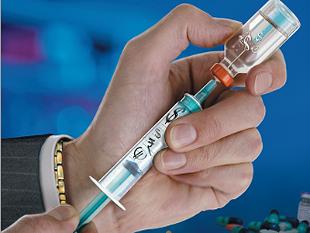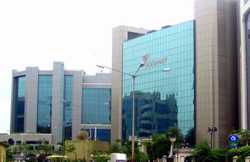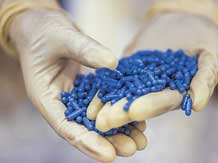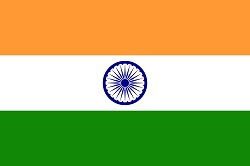Piramal Enterprises, the Piramal group’s flagship company operating primarily in the healthcare sector, has decided to close its Mumbai drug research and development (R&D) unit, its largest in the country. With this, the list of Indian drug makers that have either downsized their R&D work or have moved it outside India has got longer. Ten years ago, India wanted to become the hub for drug research. Some scientists said they could discover and develop a new molecule for less than $100 million – a tenth of what it cost abroad then. Today, much of that enthusiasm seems to have dissipated. Piramal Enterprises Vice-chairperson Swati Piramal recently told Reuters that the group has “lost the India advantage”. The only option left, she said, was to invest in R&D abroad.
The trend has already begun. Indian companies that want to expand beyond generic medicine are investing in R&D capabilities abroad. Lupin is setting up two R&D units in the United States. Cipla has said that it will invest about Rs 1,000 crore in Britain to develop drugs for respiratory- and oncology-related diseases. Sun Pharma, India’s largest drug maker, in July bought Pharmalucence in the United States, which has sterile injectable capacity there, “supported by strong R&D capabilities”. Others like Dr Reddy’s Laboratories, too, are known to be looking at similar acquisitions overseas. Carrying out research abroad is expensive, yet Indian companies are choosing to do that because of the better ecosystem there.
Read more – Business Standard Editorials
September 9, 2014 | Greg
Biopharma firms are no longer offering spare capacity to rivals, according to an analyst, who says the trend is benefiting large CMOs.
Across the biomanufacturing world, “contract manufacturing capacity is tightening,” Jefferies analyst David Windley said in a note yesterday, due in part to “Biopharmas no longer offering out their excess capacity to each other.”
Along with reductions in internal capacity leading to a growth in outsourcing, such trends come as a benefit to contract manufacturing organisations (CMOs) “because they allow it to be more selective in the projects accepted,” he added, which “should also result in greater pricing power.”
Read more BioPharma-Reporter.com
September 9, 2014 | Greg

There is nothing “virtual” about GSK’s Virtual Proof of Concept outsourcing program.
VPoC is as real as Shanghai and Hyderabad. As a drug discovery engine, it is as tangible as compounds progressing through the clinic and to late-stage development. According to Allen Oliff, senior vice president at GSK’s Alternative Discovery and Development, and founder and leader of VPoC, it is also the most cost-effective outsourcing on the globe.
Located with his team at GSK’s King of Prussia, PA, facilities, Oliff speaks quietly but with a determination for straightforward explanation regarding the reality in the world of outsourcing as he has experienced it.
“VPoC started in 2008 with six people overseeing two discovery programs, and we’ve grown to 25 managing 15 projects today,” says Oliff. “Nowadays, the name “virtual” to indicate we are outsourcing has become something of a misnomer. While maybe not to our level of whole-project outsourcing, externalization has become a standard for pharmaceutical research. For us, it is predominantly externalized to Asia.”
Oliff minces no words on the subject of outsourcing to Asia—specifically China and India—and deftly debunks theoreticals that get loosely repeated in the outsourcing industry. The foremost regard quality.
“Until the early 2000s, the quality of the work you could get at most Asian CROs was not up to the level of Western Europe and North America,” he says. “In the last decade or so the quality is absolutely as good there as it is any place else on the planet.”
Read more – Outsourced Pharma
September 9, 2014 | Greg

Indian generic drug makers are exploring all options to get a foot in the door to Japan’s lucrative but difficult-to-crack $111-billion drug industry.
The penetration of generic drugs in Japan, the world’s largest drug market after the US and Europe is a little more than 30 per cent compared with more 80 per cent in the US drug market. The Japanese government now wants to raise this share to 60 per cent by 2017 as it looks to make healthcare affordable.
According to analysts and experts, companies including Lupin, Dr Reddy’s Laboratories, Sun Pharma, Glenmark, Shasun Pharma, Sami Labs and Aurobindo Pharma are making efforts to increase their business with Japan.
Read more – The Economic Times
September 8, 2014 | Greg

Though the recent visit of Prime Minister Narendra Modi to Japan ended on a not-so-eventful note for the Indian pharma sector, the industry is hopeful that the Japanese market will slowly turn to India for exports of generics.
Japan, which was so far had been a market for patented and innovative drugs, is slowly realising the importance of low-cost generics, due to growing ageing population.
S V Veerramani, president, Indian Drug Manufacturers’ Association (IDMA) and chairman and managing director, Fourrts (India) Laboratories, told dna, “Japanese market was earlier a more innovator and research-based market, and only allowed patent-based products. But they are slowly turning to generics because they have realised that prices of generics are lower and also that Japan has a large ageing population.” The government there is giving added benefits, such as tax incentives, etc, to hospitals and doctors who are prescribing generics, he said.
P V Appaji, director general, Pharmaceuticals Export Promotion Council of India, said if Japan has to reduce its healthcare burden, it must depend on generics, adding that the Japanese government also has announced policy for increasing share of generic usage in the country.
Read more – dnaindia.com
September 8, 2014 | Greg
While the foreign-born make up just 13% of the U.S. population, they hold about 17% of the jobs in the U.S. pharmaceutical industry, according to a study by the Institute for Immigration Research at George Mason University in Fairfax. Va.
Even more significantly, the report points out, immigrants constitute 33% of the total research and development workforce and more than 40% of the scientists.
India is by a wide margin the top place of origin for U.S. pharmaceutical workers…
Read more – India West: Business
September 6, 2014 | Greg

Wockhardt has been in a world of hurt since the FDA last year banned two of the plants that made drugs for the U.S. market. But the Indian drugmaker has said that with the help of outside consultants it can get most of its problems with the FDA resolved within the year, and that has the M&A handicappers suggesting it is prime takeover target.
“If you’re confident in your capabilities that you can turn around and manage the U.S. business in a high-quality manner, you can buy some of those assets at a relatively cheap price,” Nitin Agarwal, a Mumbai-based analyst at IDFC, tells Bloomberg.
While Wockhardt officials insist it has no interest in selling, that has not stopped analysts from playing matchmaker, especially since execs at India’s Lupin acknowledged recently that they analyzed whether buying Wockhardt would make sense. The analysts are suggesting some of the usual suspects: Teva Pharmaceutical Industries ($TEVA), Actavis ($ACT) and Mylan ($MYL), Bloomberg reports.
Read more – FiercePharma Manufacturing
September 4, 2014 | Greg
For acquirers willing to look past U.S. punishments for quality and hygiene violations at two plants, Indian drugmaker Wockhardt Ltd. (WPL) is offering the prospect of a return to revenue growth next year.
The Mumbai-based maker of almost 1,000 treatments worldwide has said it is addressing concerns raised last year by the Food and Drug Administration, the U.S. agency that banned sales of drugs from two of Wockhardt’s Indian factories and questioned the accuracy of laboratory records. Revenue, which took a hit after the U.S. action, is projected to rebound to almost $1 billion in 2017 as Wockhardt rolls out new products at home.
The $1.3 billion company already attracted the attention of Lupin Ltd., its Mumbai-based rival. Wockhardt could also appeal to a large generic drugmaker or an international pharmaceutical company looking to acquire a domestic business in India, Antique Stock Broking Ltd said. Logical suitors include Mylan Inc. and Actavis (ACT) Plc, according to IDFC Securities Ltd.
“What’s attractive about this company, in spite of the import alerts, is its presence in India, the U.S. and Europe,” Prakash Agarwal, an analyst at CIMB Securities India Pvt. in Mumbai, said by phone. Wockhardt’s research and development team is also a strength, Agarwal said.
When FDA inspectors arrived in March 2013 at Wockhardt’s factory at Waluj, in the western Indian city of Aurangabad, they found open toilet drains and stagnant urine near the entrance to the sterile manufacturing facility. Wockhardt said Aug. 12 that U.S. revenue fell 60 percent in its fiscal first quarter ended in June following the FDA’s sales bans.
Read more – Bloomberg
September 4, 2014 | Greg

Pharma major Cipla on Wednesday said it would spend around Rs 600 crore in research and development during this year to implement research oriented projects.
“Innovation is an integral part of Cipla’s success in R&D. This year we will spend around Rs 600 crore in R&D and efforts are directed towards accountable and implementable research- oriented projects,” Cipla Chairman Y K Hamied told shareholders at the company’s 78th Annual General Meeting.
“We have been granted many patents in the field of pharmaceuticals,” he added.
Read more – Business Standard News
September 4, 2014 | Greg
Silicon Valley loves to hate the Food and Drug Administration.
In my eight months on the health beat at Re/code, the agency comes up repeatedly in interviews, cast as the plodding, paternalistic bureaucrats stifling technological and medical progress.
While health is suddenly a hot topic in the region, a handful of venture capitalists have said they simply won’t invest in companies that require FDA approval — opting for the relative safety (or more obvious exits) of health apps and infrastructure plays over drugs and diagnostics. Others are looking for end runs around the system altogether.
In large part it’s a cultural clash. The ask-forgiveness-not-permission ethos of an Uber or Airbnb, which counts on consumer sentiment to swing policy, doesn’t play with the FDA. You’re not allowed to move fast and break things when it comes to people’s health. And the agency doesn’t take kindly to companies that violate its rules while ignoring repeated requests for information.
But some in Silicon Valley, particularly those who have no choice but to work with the FDA, are striving to locate what is ultimately some obvious middle ground…
Read more – Re/code
September 3, 2014 | Greg

Indian pharmaceutical companies have capitalised on export opportunities in regulated and semi-regulated markets and pharma exports from India grew at a CAGR in excess of 20% from 2006 to 2012. Currently, India is the third-largest exporter of Active Pharmaceutical Ingredients (APIs). Indian pharma exports are expected to bring in an estimated $25 billion by the end of 2014.
Changes in the global landscape brought about by the increasing costs of healthcare and drying R&D pipelines have been able to create a number of opportunities for Indian players. The US and EU markets have been the largest importers of Indian products, but increasing scrutiny in these geographies is threatening export revenues and Indian companies would have to look at risk mitigation strategies. Further, the global environment, both from a regulations and a business perspective is changing rapidly and Indian pharmaceutical companies will be required to adapt their business models and operating strategies accordingly. It would be upon these companies to choose the most adequate lever to tap into newer markets as a part of their expansion strategy in the future. Understanding market dynamics will be imperative in determining the extent of growth and reach that Indian companies will be able to achieve.
Read more – Business Standard News
September 3, 2014 | Greg

Should a generic drug maker be held responsible for failing to immediately update its product labeling to match the equivalent brand-name medicine?
The question has been raised in connection with a lawsuit filed by a consumer who claims she suffered harm because risk information for a generic medicine she was prescribed was allegedly insufficient. But the timeliness of the warning has become a central issue in the case, which U.S. Supreme Court has been asked to review. Moreover, the court asked the U.S. Solicitor General to offer its views.
At stake is yet another contentious effort to interpret federal and state laws governing liability for medicines, a topic that has embroiled the pharmaceutical industry, regulators and the courts for the last several years. And as with a controversial Supreme Court ruling three years ago, the fortunes of the generic drug industry may once again be in play.
Read more – Pharmalot – WSJ
September 3, 2014 | Greg

Fifteen short years ago, India and China were emerging pharmaceutical markets content with supplying low-cost active pharmaceutical ingredients (APIs) to local customers. Today, these nations dominate the global bulk drug landscape, supplying regulated markets worldwide, with many Indian and Chinese companies now vertically-integrated and able to supply finished dose generics throughout the world. According to Thomson Reuters Newport, India and China combined have almost 2000 API manufacturers, a quarter of which are capable of supplying regulated markets.
As the size and scope of these pharmaceutical supply chains have grown, however, labor and energy costs have grown too, along with the scrutiny of foreign regulators. Companies in India and China will need to recoup rising production costs by raising consumer prices, perhaps incentivizing second wave emerging markets to turn to domestic API production to support growing pharmaceutical needs. Recent sourcing issues and import bans in India and China have also prompted some finished dose companies to seek new supply sources, creating opportunities for emerging market companies willing to manufacture to regulated market standards.
Several Asian countries outside of India and China are currently poised to capture a greater share of the global pharmaceutical market. These smaller Asian nations hope that domestic drug production can satisfy their increased needs for medicines to treat growing elderly populations and a greater incidence of lifestyle disease…
Read more – Life Sciences Connect
September 2, 2014 | Greg

The “Indian advantage” has been the ability to do clinical trials and manufacture drugs for global export at perhaps a tenth of the cost that drugmakers in the West face. But with actions by the FDA and Western regulators forcing plants from exporting to those markets and a need to move to higher-margin drugs, some Indian drugmakers are giving up that edge in an effort to raise profits.
“We have lost what is called the India advantage,” Swati Piramal, vice-chair of Mumbai-based Piramal Enterprises, told Reuters. But she said “the new alternative” is to acquire small groups of people who have the expertise to research and make a particular type of product…
Read more – FiercePharma Manufacturing
September 2, 2014 | Greg

The combination of increased government healthcare coverage, ballooning government debt, and massive expiry of patent protection on originator drugs has spurred an interest in sourcing generic active pharmaceutical ingredients and finished drugs from lower-cost countries.
In this context, India has emerged as a powerhouse in supplying the Western pharmaceutical markets. India now ranks second to the U.S. only in terms of FDA-inspected facilities and number of active DMFs (drug master files), and it provides great value for a relatively secure supply of pharmaceuticals.
U.S.-based pharmaceutical companies now have numerous strategic supply and marketing agreements in place with the Indian pharma industry. Allergan and Pfizer with Nicholas Piramal, Wyeth with Bharat Biotech, and DSM with Lupin are examples of such strategic collaborations.
These strategic supply and marketing partnerships extract maximum value for their shareholders as they maximize capacity utilization in India and market share in the U.S. at minimum incremental expense…
Read more – Life Science Leader
September 2, 2014 | Greg









